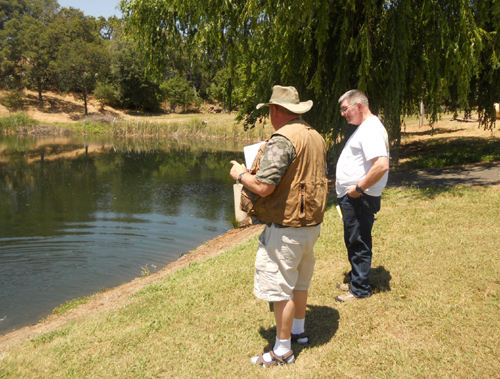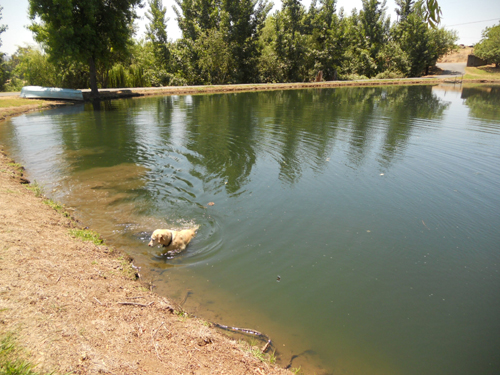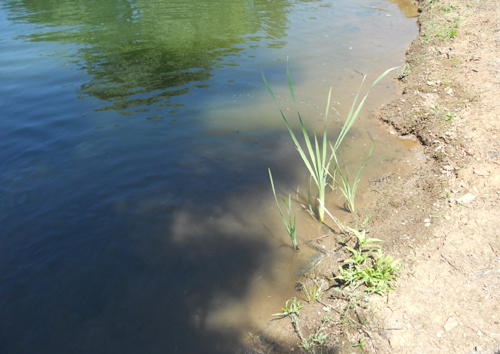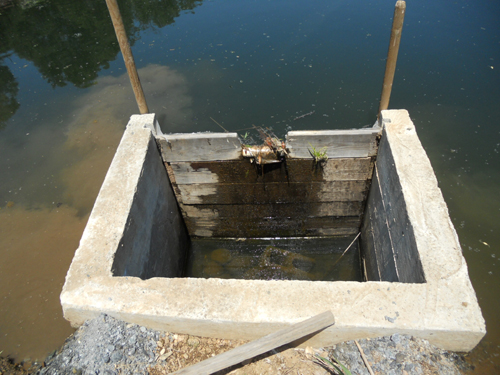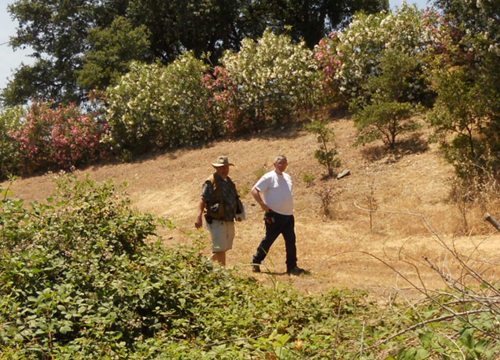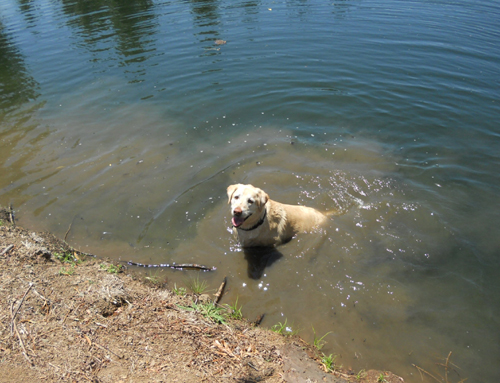Inspect the Pond?
Inspect the Pond?
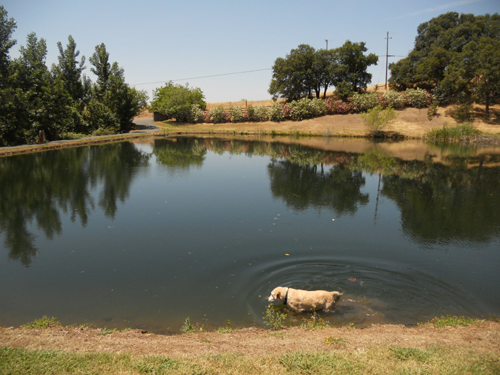
Yep. If you’re gonna buy country property, and there’s a pond on it, you should inspect the pond. Can you actually find and hire a “pond inspector?” In our rural neck of the woods, you can. One of the best-known is Keith Crabtree who has a business called Green Acres 101. I’ll give you the link to his website at the end of this blog.
Here’s a photo of Keith (white socks and sandals) consulting with my buyer-client, Jim Bradley.
This is a good time for a quiz. What is the optimum color for pond water?
No, it’s not crystal clear “where you can look all the way down to the bottom and see the little fishes at play.” If you can see all the way down, sunlight can get all the way down there, too. Sunlight + dead plant matter + algae + photosynthesis = scum. The best color is . . . green. How green? Green enough that a circle of white, concrete perhaps, disappears after sinking 18″ to 24″. Bet you didn’t know that. Neither did I until after Mr. Crabtree’s consultation this afternoon. Of course, if you scoop up a glass full of the pond water, you want it to look clear in the glass.
This pond, according to Crabtree’s inspection is a “good looking pond.” Besides being the right color, this pond has very little invasive vegetation. There’s a bank of cattails on the far side, but they haven’t gotten out of hand yet. Do you know how to control cattails? I bet you don’t. Drown them. Yep. Cut them off below the water line, the “dead” brown ones as well as the green ones, and let their hollow stems fill with water and drown. If they are small and just getting started like these, you can pull them out, but once they establish a big root system, oh baby, you are going to have some work ahead of you.
Another important element of a working pond is a spillway or outlet of some kind. This is a good one.
You can lift out the boards on the water-side and lower the level of the pond. Why would you want to do that? One reason is so you can work on your pond, especially along the shoreline. The other reason is to increase the holding capacity just before the big rains come. You don’t want your pond overflowing the banks, do you? No, of course you don’t.
There’s lots, lots more to learn about ponds (maintaining your fish, benign plants, circulation, aeration, leaks-and-how-to-fix-them, optimum slope, appropriate and inappropriate foliage to plan around the pond and so on), but I’ll save that for another blog, or even better, you can take one of Keith Crabtree’s classes by signing up on his greenacres.com website.
Here’s a final look at the pond, and one of the best reasons to have one. You and your pooch can have so much fun!
If you enjoyed reading this article, and want to find out more,
just CALL CJ at (530-906-4715) or subscribe below.
Stay Informed
Get the latest posts delivered direct to your email

